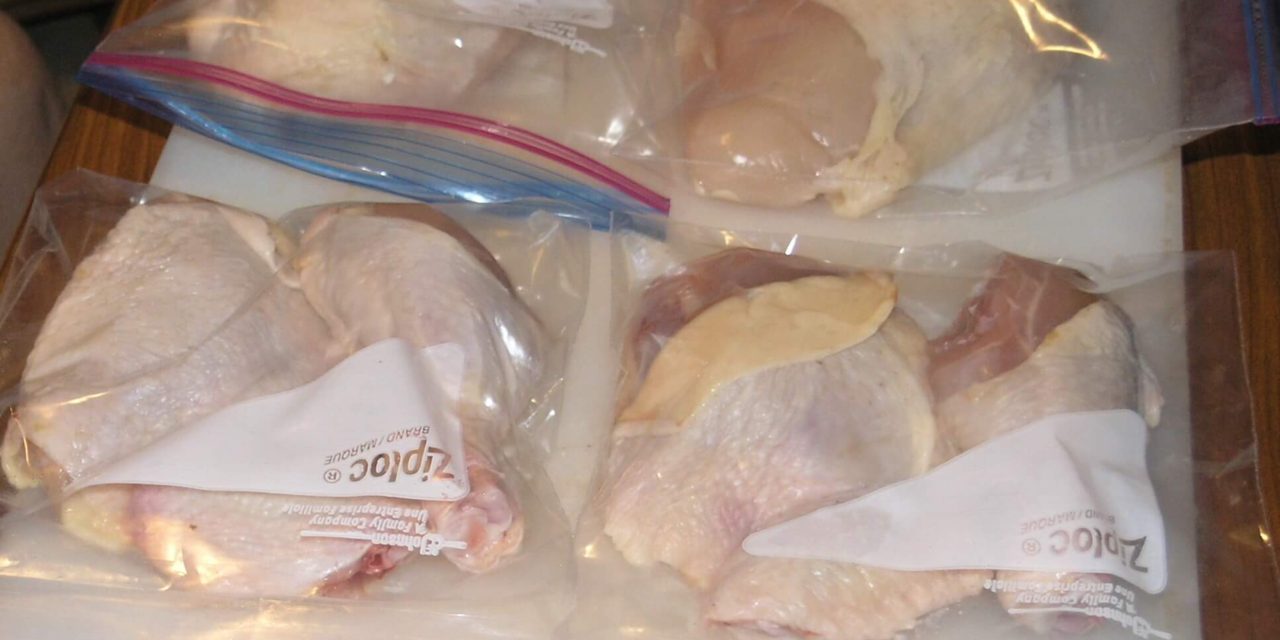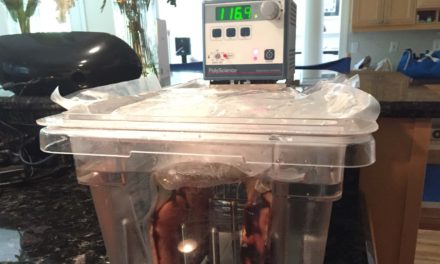This article explains how to use a self sealing plastic bag for sous vide processing.
Channel and chamber vacuum devices are readily available. Channel vacuums have become more reasonably priced over the years, but chamber vacuums are still several hundred dollars and neither is absolutely necessary for sous vide processing.
Self sealing plastic bags can be effective for use in sous vide, especially for beginners who are not sure if they want to invest in channel or chamber vacuum devices. We want to remove as much air as possible from the bag so that heat from the bath is conducted evenly to the contents–air interferes with the efficient conduction of heat.
Not all self sealing plastic bags are suitable for sous vide processing. They must be capable of withstanding sous vide temperatures and they must be capable of being securely sealed. The best bags for this purpose are Ziploc Freezer bags.
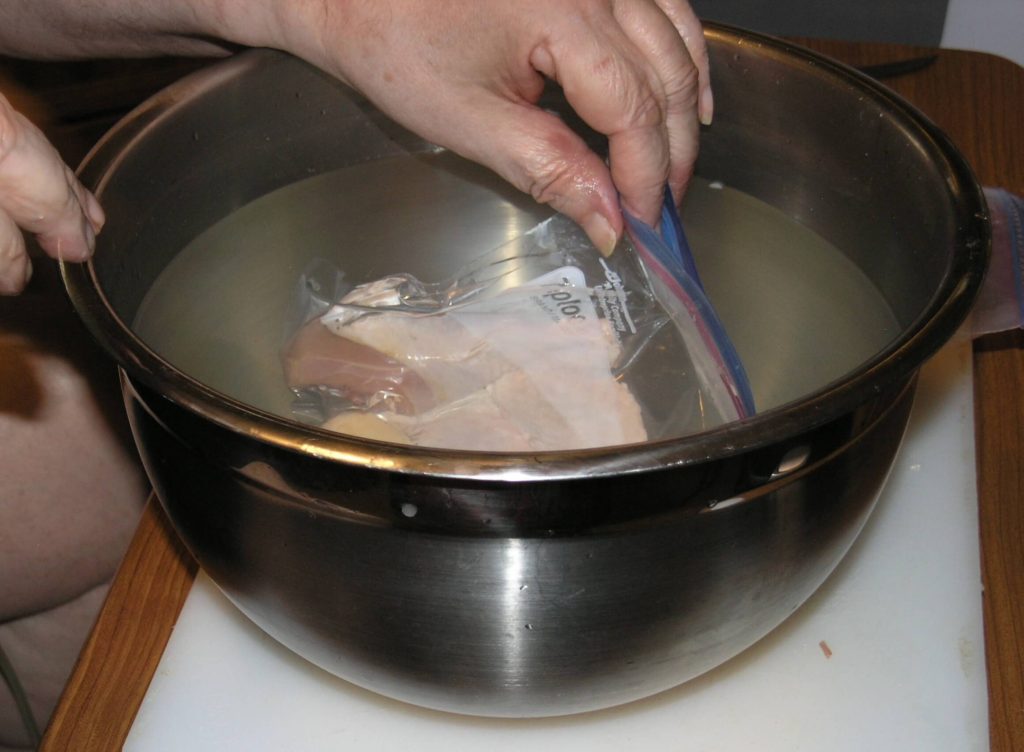
In order to implement the water displacement method, place your food in the bag and zip it until there is only 1″-2″ left open at the corner. Put your finger in the opening and pinch the bag to secure it.
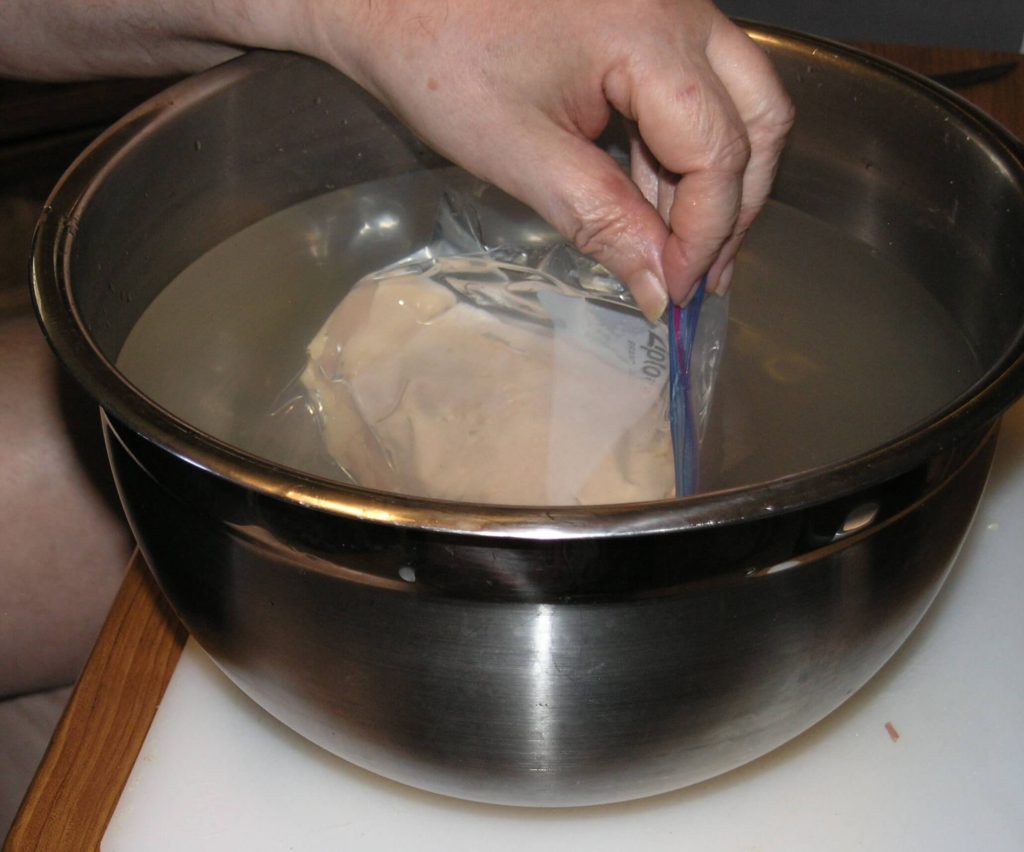
Slowly lower the package into cold water. You will see the water slowly force the air out of the package.
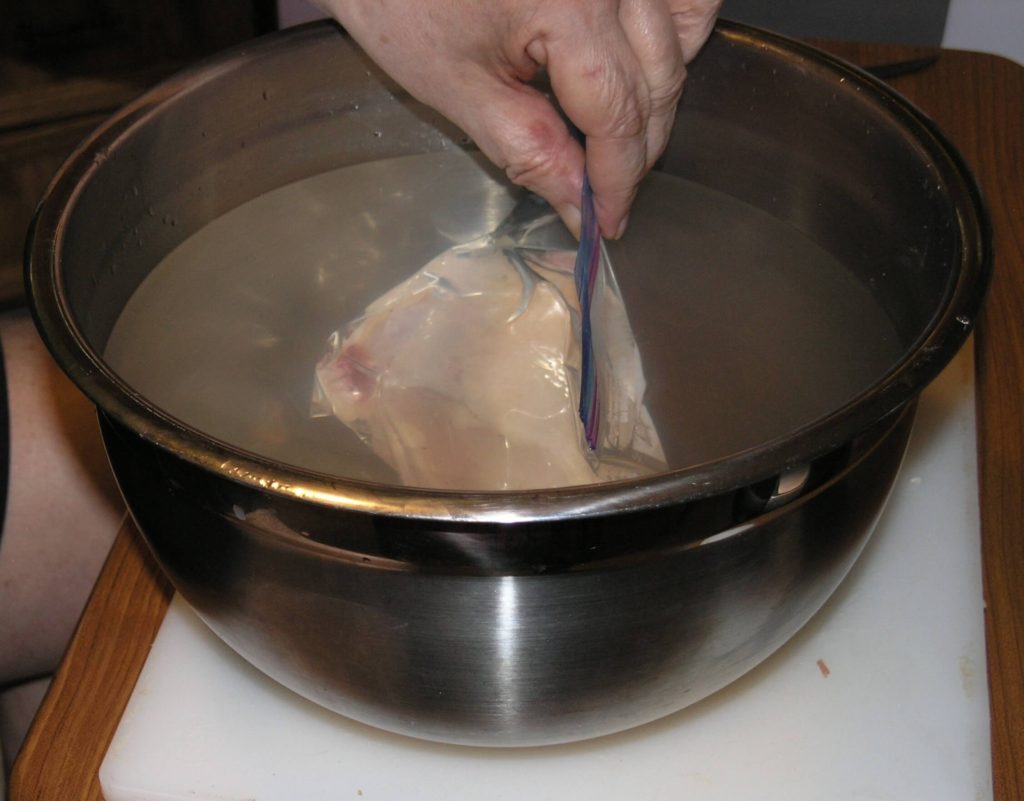
Remove your finger from the opening and seal the rest of the bag just before the opening meets the water line. Assuming you have some form of protein in the bag, the whole package should sink. A small amount of water or air in the bag is harmless, but you can repeat the process if you feel there is too much. With a little practice, this technique becomes very easy.
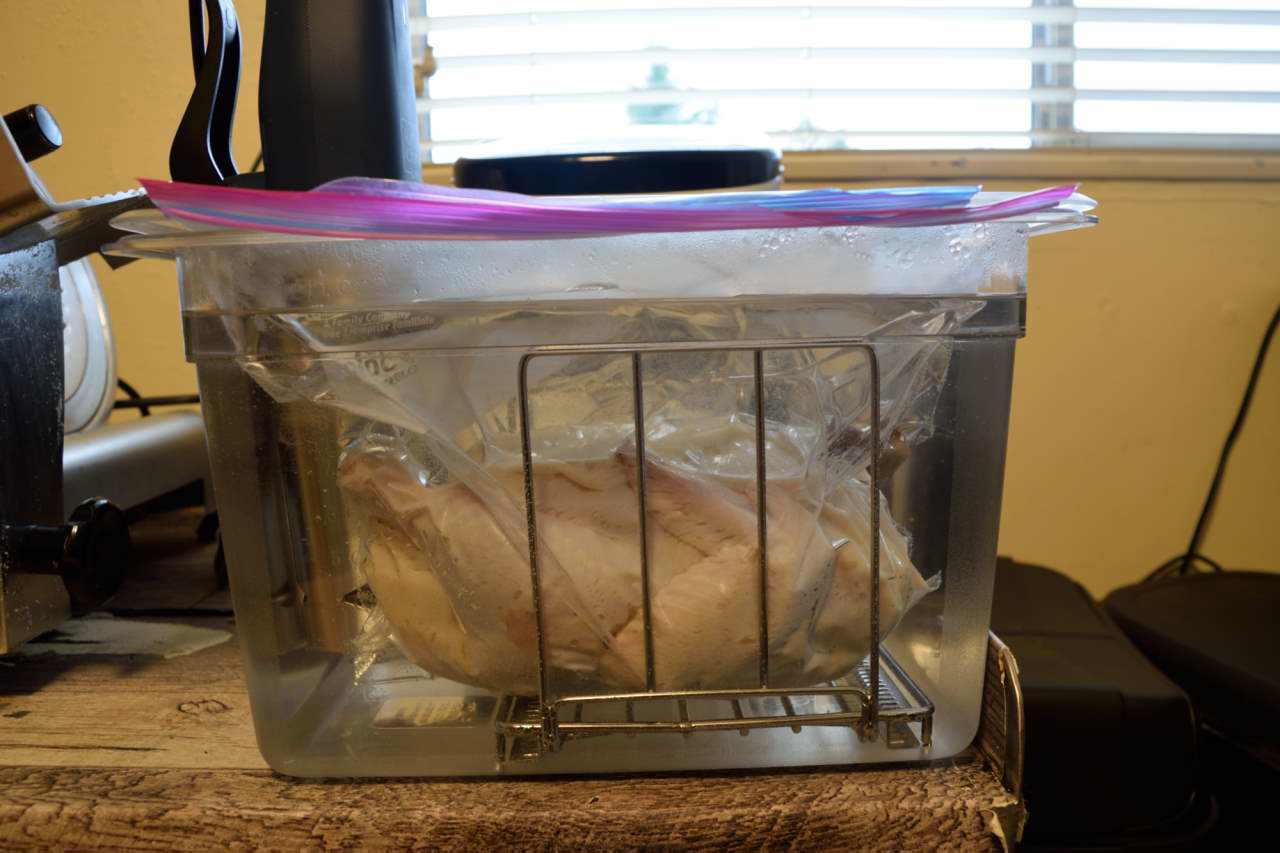 If you are not confident that your seal is water tight, you can hang the top over the edge of the vessel and use a clothes pin or lid to prevent it from being exposed to the water. Remember that the food itself must be under the water line at all times.
If you are not confident that your seal is water tight, you can hang the top over the edge of the vessel and use a clothes pin or lid to prevent it from being exposed to the water. Remember that the food itself must be under the water line at all times.
Happy processing!

